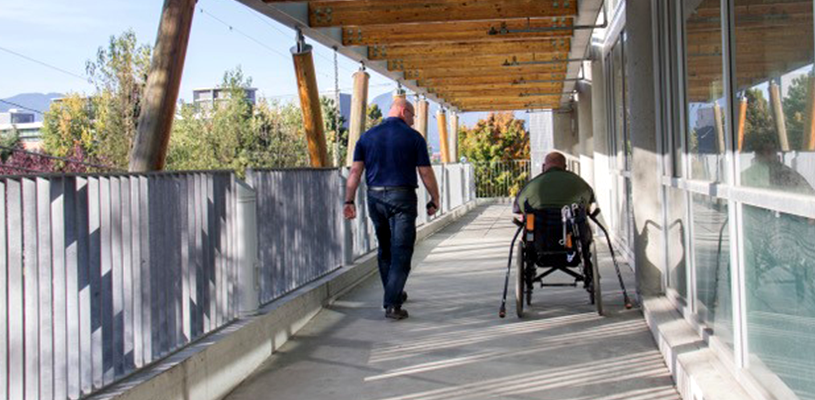Creating meaningful access for everyone, everywhere

When Jeff Cantwell, the mayor of Wolfville, Nova Scotia, invited local resident Agnieszka Hayes to chat with him about the town’s accessibility, she brought a long list of things that needed fixing. One item on the list: an accessible parking space with no curb cuts – a paradox that many wheelchair users are familiar with. Since that meeting, Hayes has become chair of the town’s Accessibility Advisory Committee, which is part of a larger project to make Wolfville accessible for all.
Accessible parking is just one area the Town of Wolfville is looking to improve. Under the guidance of Nova Scotia’s Accessibility Directorate, Wolfville, population 4,195, has volunteered to serve as the pilot project for a comprehensive accessibility plan that will focus on the built environment, transportation, goods and services, employment, and information and communication. The town is the first jurisdiction to develop an accessibility plan under the province’s Accessibility Act.
A town-wide accessibility plan is no small feat, so the Nova Scotia Accessibility Directorate’s Joshua Bates has been working closely with Wolfville. Bates turned to the Rick Hansen Foundation Accessibility Certification (RHFAC) program to provide a framework for the town’s plan in regards to the built environment.
Accessibility Certification Program
RHFAC is a national rating system that goes above and beyond building code to provide meaningful access, taking into consideration a wide range of obstacles, including mobility, vision, and hearing. “It’s great for us to have such a high standard and high-quality plan to hold up for other municipalities,” said Bates. Wolfville’s ultimate accessibility goal is to have every new building and future retrofit meet the foundation’s RH Accessibility Certified Gold standard.
Wolfville’s Community Planner Jeremy Banks took the RHFAC Accessibility Assessor training course to deepen his understanding of accessibility. He said the standards created by RHFAC have informed their entire methodology in developing and implementing their plans. “RHFAC is going to be the main tool that we use to look at the built environment,” said Banks. “In a lot of ways it’s not about barriers, it’s about equal access – and that equal access is a basic fundamental human right.”
Budgeting for Accessibility
One of the main concerns when it comes to accessibility, especially for smaller towns, is cost. Accessibility is an important issue, but what can you do when you have limited funds to work with?
Mike MacLean is Wolfville’s Director of Financial Services and also the Accessibility Coordinator. When it comes to the cost of accessibility, he said it’s important to look at the broader impact. His advice is to “Start now, start early,” and don’t wait for problems to prescribe legislation. Like sustainability, he recommends identifying ways to incorporate accessibility into your annual planning process. That way, it gets embedded into everything you do and is fitted into the budget from the beginning.
Wolfville’s accessibility plan is technically complete, but Hayes emphasizes it is a living document and always up for discussion. Everyone agrees that the completion of the plan marks the real beginning of the work. “I’m excited to see that parking spot become accessible,” Hayes said. “That’s the part that excites me the most: seeing the community be transformed as a result of the actions outlined in the plan.”
Read Wolfville: Access by Design at www.wolfville.ca/accessibility-advisory-committee. MW
Rick Hansen Foundation Accessibility Certification is a rating system that measures the accessibility of buildings, sites, and final design plans, and promotes increased access through the adoption of universal design principals. Visit www.rickhansen.com/RHFAC for more information and to book your rating today.



